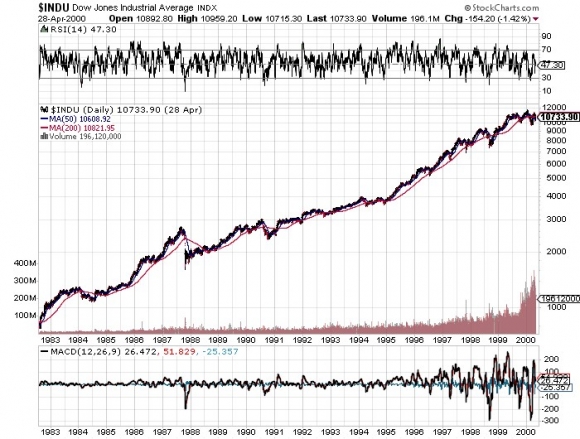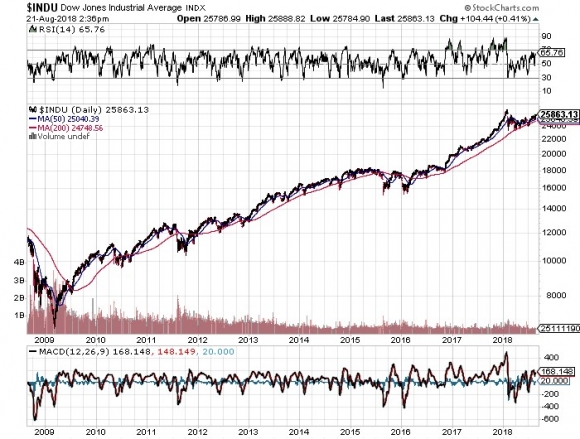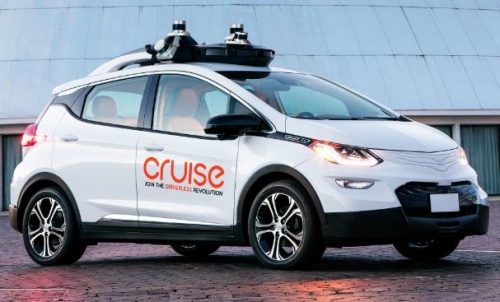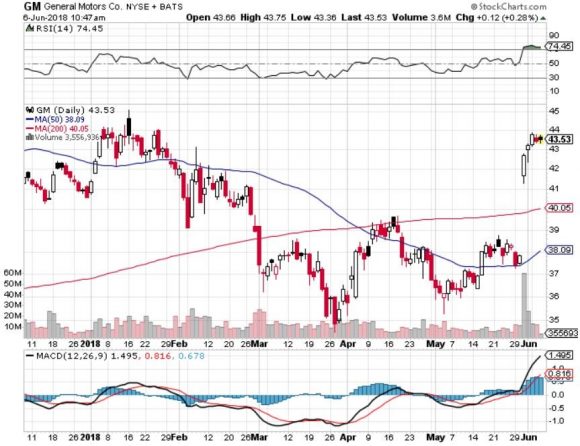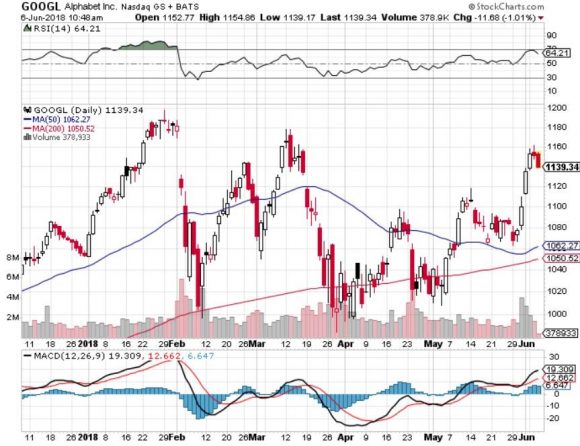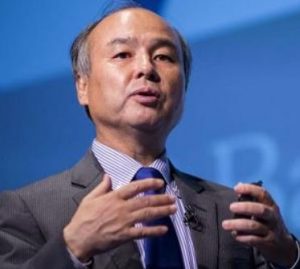Global Market Comments
August 23, 2018
Fiat Lux
Featured Trade:
(WHY THE DOW IS GOING TO 120,000),
(X), (IBM), (GM), (MSFT), (INTC), (DELL),
($INDU), (NFLX), (AMZN), (AAPL), (GOOGL),
(THE MAD HEDGE CONCIERGE SERVICE HAS AN OPENING),
(TESTIMONIAL)
Posts
For years, I have been predicting that a new Golden Age was setting up for America, a repeat of the Roaring Twenties. The response I received was that I was a permabull, a nut job, or a conman simply trying to sell more newsletters.
Now some strategists are finally starting to agree with me. They too are recognizing that a ganging up of three generations of investment preferences will combine to drive markets higher during the 2020s, much higher.
How high are we talking? How about a Dow Average of 120,000 by 2030, up another 465% from here? That is a 20-fold gain from the March 2009 bottom.
It’s all about demographics, which are creating an epic structural shortage of stocks. I’m talking about the 80 million Baby Boomers, 65 million from Generation X, and now 85 million Millennials. Add the three generations together and you end up with a staggering 230 million investors chasing stocks, the most in history, perhaps by a factor of two.
Oh, and by the way, the number of shares out there to buy is actually shrinking, thanks to a record $1 trillion in corporate stock buybacks.
I’m not talking pie in the sky stuff here. Such ballistic moves have happened many times in history. And I am not talking about the 17th century tulip bubble. They have happened in my lifetime. From August 1982 until April 2000 the Dow Average rose, you guessed it, exactly 20 times, from 600 to 12,000, when the Dotcom bubble popped.
What have the Millennials been buying? I know many, like my kids, their friends, and the many new Millennials who have recently been subscribing to the Diary of a Mad Hedge Fund Trader. Yes, it seems you can learn new tricks from an old dog. But they are a different kind of investor.
Like all of us, they buy companies they know, work for, and are comfortable with. During my Dad’s generation that meant loading your portfolio with U.S. Steel (X), IBM (IBM), and General Motors (GM).
For my generation that meant buying Microsoft (MSFT), Intel (INTC), and Dell Computer (DELL).
For Millennials that means focusing on Netflix (NFLX), Amazon (AMZN), Apple (AAPL), and Alphabet (GOOGL).
That’s why these four stocks account for some 40% of this year’s 7% gain. Oh yes, and they bought a few Bitcoin along the way too, to their eternal grief.
There is one catch to this hyper-bullish scenario. Somewhere on the way to the next market apex at Dow 120,000 in 2030 we need to squeeze in a recession. That is increasingly becoming a topic of market discussion.
The consensus now is that an impending inverted yield curve will force a recession sometime between August 2019 to August 2020. Throwing fat on the fire will be a one-time only tax break and deficit spending that burns out sometime in 2019. These will be a major factor in U.S. corporate earnings growth dramatically slowing down from 26% today to 5% next year.
Bear markets in stocks historically precede recessions by an average of seven months so that puts the next peak in top prices taking place between February 2019 to February 2020.
When I get a better read on precise dates and market levels, you’ll be the first to know.
To read my full research piece on the topic please click here to read “Get Ready for the Coming Golden Age.”
Dow 1982-2000 Up 20 Times in 18 Years
Dow 2009-Today Up 4.3 Times in 9 Years So Far
Global Market Comments
August 10, 2018
Fiat Lux
Featured Trade:
(AUGUST 8 BIWEEKLY STRATEGY WEBINAR Q&A),
(SPY), (TBT), (PIN), (ISRG), (EDIT), (MU), (LRCX), (NVDA),
(FXE), (FXA), (FXY), (BOTZ), (VALE), (TSLA), (AMZN),
(THE DEATH OF THE CAR),
(GM), (F), (TSLA), (GOOG), (AAPL)
One of the goals of the Diary of a Mad Hedge Fund Trader is to identify major changes in the global economy early enough to get investors into the impacted shares early.
The death of the car is one of those trends, and it is still early, very early.
This is a very big deal.
Earlier in my lifetime, car production directly and indirectly accounted for about one-third of the U.S. economy.
Much of the growth during our earlier Golden Ages, in the 1920s and the 1950s, were driven by a never-ending cycle of upgrades of our favorite form of transportation and the countless ancillary products and services needed to support them.
Today, 253 million automobiles and trucks prowl America's roads, about half the world's total, with an average age of 11.4 years.
The demise of this crucial industry started during the 2008 crash, when (GM) and Chrysler (owned by Fiat) went bankrupt. Only more conservatively run, family owned Ford (F) survived on its own.
The government stepped in with massive bailouts. That was the cheaper options for the Feds, as the cost of benefits for an entire unemployed industry was far greater than the cost of the companies absorbed.
If it hadn't done so, the auto industry would have decamped for a new base near the technology hub in California, and today would be a decade closer to their futures than they are now.
And remember, the government made billions of dollars of profits from its brief foray into the auto industry. It was one of the best returns on investment in history.
I'll breakout the major directions the industry is now taking. Hint: It doesn't have much to do with traditional metal bashing.
The Car as a Peripheral
The important thing about a car today is not the car, but the various doodads, doohickeys, gizmos, and gadgets they stick in them.
In this category you can include 24/7 4G wireless, full Internet access, mapping software, artificial intelligence, and learning programs. 5G will accelerate this functionality tenfold.
(GM) is now installing more than 100 microprocessors in its vehicles to control and monitor various functions.
Good luck doing your own tune-ups.
The Car as a Service
When you think about it, automobile ownership is a wildly inefficient use of capital. It is usually a family's second-largest expense, after their home, running $30,000-$80,000.
It then sits unused in garages or public parking for 96%-98% of the day. Insurance, maintenance, and liability costs can be off the charts.
What if your car was used 24/7, as is machinery in well-run industrial plants? Your cost drops by 96%-98% to the point where it is almost free.
The sharing economy is the way to accomplish this.
We are already seeing several start-ups in major U.S. cities attempting to achieve this such as Zipcar, Car2Go, Getaround, Turo (formerly RelayRides), and City CarShare.
What happens to conventional car companies when consumers shift from ownership to sharing? Demand plunges by 96%-98%.
Perhaps that is why auto shares (GM), (F) have performed so abysmally this year relative to technology and the main market.
Self-Driving Technology
This is the hottest development area in the industry, with Apple (AAPL), Alphabet (GOOG), and the big European car makers committing thousands of engineers.
Let's say your car is now comfortably driving you to work, allowing you to read the morning papers and catch up on your email. Or maybe you're lazy and would rather watch the season finale for Game of Thrones.
What else is possible?
How about if, instead of parking, your car drops you off, saving that exorbitant fee.
Then it joins Uber, picking up local riders and paying for its own way. It then dutifully returns to pick you up at your office when it's time to go home.
Since the crash rate for computers is vastly lower than for humans, car insurance rates will collapse, gutting that industry.
Ditto for life insurance, as 35,000 people a year will no longer die in car crashes.
Half of all emergency room visits are the result of car accidents, so that business disappears too, dramatically shrinking health care costs in the process.
I have been letting my new Tesla S-1 drive me since last year, and I can assure you that the car can drive better than I can, especially at night.
What better way to get home after I have downed a bottle of Caymus cabernet at a city restaurant?
Driverless electric cars are totally silent, increasing the value of land near freeways.
Nor do they require much maintenance, as they have so few moving parts. Exit the car repair industry.
I could go on and on, but you get the general idea.
For more on the topic, please read "Test Driving Tesla's Self Driving Technology" by clicking here.
Virtual Reality
After 30 years of inadequate infrastructure budgets, trying to get into any American city center is a complete nightmare.
Only last week, a cattle truck turned over on the Golden Gate Bridge, bringing traffic to a halt. Fortunately, a cowboy traveling to a nearby rodeo was able to unload his horse and lasso the errant critters (no, it wasn't me!).
Even if you get into the city, you will be greeted by a $40 tab for a parking space. Hopefully, no one will smash your windows and steal your laptop (happened to me last year).
Why bother?
Thirty years ago, teleconferencing services pitched themselves as replacing the airplane.
Today, we are taking the next step, using Skype and GoToMeeting to conduct even local meetings, as we do at the Mad Hedge Fund Trader.
Virtual reality is clearly the next step, providing a 3-D, 360-degree experience that makes you feel like you and your products are actually there.
Better to leave that car in the garage where it can get a top up on its charge. BART is cheaper anyway, when it runs.
New Materials
We are probably five years away from adopting the carbon fiber technology now used in the aircraft industry for mass-market cars. Carbon has one-tenth the weight of steel, with five times the strength.
The next great leap forward for electric cars won't be through better batteries. It will come through a 70% reduction of the mass of a car, tripling ranges with existing technology.
San Francisco Becomes the Car Capital of the World
This will definitely NOT happen, as sky-high rents assure that the city by the bay will never attract large, labor-intensive industries.
Instead, the industry will develop much as the one for smartphones. The high value-added aspects, design and programming, will stay in California.
The assembly of the chassis, the body, and the rest of the vehicle will be best done in low-cost, tax-free states with a lot of land, such as Texas and Nevada.
What will happen to Detroit? It has already become a favored destination of new venture capital financial start-ups. The cost of offices and housing is virtually free.
Seems Alive to Me
Mad Hedge Technology Letter
June 21, 2018
Fiat Lux
Featured Trade:
(WHY NETFLIX IS UNSTOPPABLE),
(NFLX), (CAT), (AMZN), (CMCSA), (DIS), (FOX), (TWX), (GM), (WMT), (TGT)
Trade war? What trade war?
Apparently, nobody told Netflix (NFLX) that we are smack dab in a tit-for-tat trade war between two of the greatest economic powers to grace mankind.
No matter rain or shine, Netflix keeps powering on to new highs.
The Mad Hedge Technology Letter first recommended this stock on April 23, 2018, when I published the story "How Netflix Can Double Again," (click here for the link) and at that time, shares were hovering at $334.
Since, then it's off to the races, clocking in at more than $413 as of today, a sweet 19% uptick since my recommendation.
It seems the harder I try, the luckier I get.
What separates the fool's gold from the real yellow bullion are challenging market days like yesterday.
The administration announced a new set of tariffs on $200 billion worth of Chinese imports.
The day began early on the Shanghai exchange dropping a cringeworthy 3.8%.
The Hong Kong Hang Seng Market didn't fare much better cratering 2.78%.
Investors were waiting for the sky to drop when the minutes counted down to the open in New York and futures were down big premarket.
Just as expected, the Dow Jones Index plummeted on the open, and in a flash the Dow was down 410 points intraday.
The risk off appetite toyed with traders' nerves and American companies with substantial China exposure being rocked the hardest such as Caterpillar (CAT).
After the Dow hit an intraday low, a funny thing happened.
The truth revealed itself and U.S. equities reacted in a way that epitomizes the nine-year bull market.
Tar and feather a stock as much as you want and if the stock keeps going up, it's a keeper.
Not only a keeper, but an undisputable bullish signal to keep you from developing sleep apnea.
In the eye of the storm, Netflix closed the day up a breathtaking 3.73%. The overspill of momentum continued with Netflix up another 2% and change today.
This company is the stuff of legends and reasons to buy them are legion.
As subscriber surveys flow onto analysts' desks, Netflix is the recipient of a cascade of upgrades from sell side analysts scurrying to raise targets.
Analysts cannot raise their targets fast enough as Netflix's price action goes from strength to hyper-strength.
Chip stocks have the opposite problem when surveys, portraying an inaccurate picture of the 30,000-foot view, prod analysts to downgrade the whole sector.
That is why they are analysts, and most financial analysts these days are sacked in the morning because they don't understand the big picture.
Quality always trumps quantity. Period.
Netflix has stockpiled consecutive premium shows from titles such as Stranger Things, The Crown, Unbreakable Kimmy Schmidt, and Orange is the New Black.
This is in line with Netflix's policy to spend more on non-sports content than any other competitors in the online streaming space.
In 2017, Netflix ponied up $6.3 billion for content and followed that up in 2018, with a budget of $8 billion to produce original in-house shows.
Netflix hopes to increase the share of original content to 50%, decoupling its reliance on traditional media stalwarts who hate Netflix's guts with a passion.
A good portion of this generous budget will be deployed to make 30 new anime shows and 80 new original films all debuting by the end of 2018.
Amazon's (AMZN) Manchester by the Sea harvested two Oscars for its screenplay and Casey Affleck's performance, foreshadowing the opportunity for Netflix to win awards next time around, potentially boosting its industry profile.
It will only be a matter of time because of the high quality of production.
Netflix's content budget will dwarf traditional media companies by 2019, creating more breathing room against the competitors who have been late to the party and scrambling for scraps.
This is what Disney's futile attempts to take on Netflix, which raised its offer for Fox to $71.3 billion to galvanize its content business.
Disney's (DIS) bid came on the heels of Comcast Corp. (CMCSA) bid for Disney at $65 billion.
The sellers' market has boosted all content assets across the board.
Remember, content is king in this day and age.
In 2017, Time Warner (TWX) and Fox (FOX) spent $8 billion each and Disney slightly lagged with a $7.8 billion spend on non-sports programming.
Netflix will certainly announce a sweetened content outlay of somewhere close to $9.5 billion next year attracting the best and brightest to don the studios of Netflix.
What's the whole point of creating the best content?
It lures in the most eyeballs.
Subscriber growth has been nothing short of spectacular.
Expectations were elevated, and Netflix delivered in spades last quarter adding quarterly total subscribers to the tune of 7.41 million versus the 6.5 million expected by analysts.
Not only a beat, but a blowout of epic proportions.
Inside the numbers, rumors were adrift of Netflix's domestic numbers stagnating.
Consensus was proved wrong again, with domestic subscribers surging to 1.96 million versus the 1.48 million expected.
The cycle replays itself over. Lather, rinse, repeat.
Quality content attracts a wave of new subscribers. Robust subscriber growth fuels more spending, which paves the way for more quality content.
This is Netflix's secret formula to success.
Netflix has executed this strategy systemically to the aghast of traditional media companies that are stuck with legacy businesses dragging them down and making it decisively difficult to compete with the nimble online streaming players.
Turning around a legacy business is tough work because investors expect profits and curse the ends of the earth if companies spend big on new projects removing the prospects of dividend hikes.
Netflix and the tech darlings usually don't make a profit but have a license to spend, spend, and spend some more because investors are on board with a specific narrative prioritizing market share and posting rapid growth.
The cherry on top is the booming secular story happening as we speak in Silicon Valley.
Effectively, all other sectors that are not tech have become legacy sectors thanks in large part to the high degree of innovation and cross-functionality of big cap tech companies.
The future legacy winners are the legacy stocks and sectors reinventing themselves as new tech players such as General Motors (GM), Walmart (WMT), and Target (TGT).
The rest will die a miserably and excruciatingly slow death.
The Game of Thrones M&A battle with the traditional media companies is a cry of desperate search for these dinosaurs.
They were too late to react to the Netflix threat and were punished to full effect.
Halcyon days are upon Netflix, and this company controls its own destiny in the streaming wars and online streaming content industry.
As history shows, nobody executes better than CEO Reed Hastings at Netflix, which is why Netflix maintains its grade as a top 3 stock in the eyes of the Mad Hedge Technology Letter.
_________________________________________________________________________________________________
Quote of the Day
"I got the idea for Netflix after my company was acquired. I had a big late fee for Apollo 13. It was six weeks late and I owed the video store $40. I had misplaced the cassette. It was all my fault," - said cofounder and CEO of Netflix Reed Hastings.
Global Market Comments
June 20, 2018
Fiat Lux
Featured Trade:
(ANNOUNCING THE MAD HEDGE LAKE TAHOE, NEVADA, CONFERENCE, OCTOBER 26-27, 2018),
(THE CHINA TRADE WAR TURNS HOT),
(GM), (AAPL), (SOYB), (WEAT), (CORN)
The trade war with China has suddenly gone from small beer to a big deal. In just two months, we have gone from campaign promises to threats, to an increase in duties from $50 billion to $250 billion worth of Chinese imports.
The risk of destroying the current strength of the economy and the stock market is now on the table. Already, the Dow Average has given up all its 2018 gains and is now down 1.1% on the year.
All we will be left with is a big tax cut for corporations, $3 trillion in new government debt, and a recession.
As a result, the current rally in the stock market will fail, and a test of the 2018 lows is on the menu. My 2018 range for stocks until the midterm election lives!
Of the past 10 years, China has generated 50% of global economic growth, the U.S. 35%, and the rest of the world the balance. Imports from the U.S. to China were already on a sharp upswing, and it is now our third largest trading partner.
Imports of U.S. autos has soared from 125,356 units in 2011 to 267,473 in 2017, and that doesn't count American cars, such as the GM Buick, built in China. It now looks like all of this will suddenly grind to a halt.
Not only will Chinese middle-class consumers buy European and Japanese going forward, the American brand has been destroyed by our open hostility and insults. Apple (AAPL) sells more iPhones in China than the U.S., but I'm not sure that will last either.
China only imported $150 billion worth of goods from the U.S. last year. That means to implement a tit-for-tat, dollar-for-dollar retaliation China will have to hit the U.S. services sector hard. Similarly, you can bet that Chinese investment in the U.S. will be sharply curtailed.
The true cost of the trade war isn't in the dollar amounts involved ... yet. But the impact on business confidence has been catastrophic.
Investment globally is slowing because nobody knows if their industry, or their company will get hit next by American off-the-cuff policies. Just ask any soybean (SOYB) farmer who is looking at a de facto ban on Chinese purchases of their products. The price of their commodity has collapsed by 16% in a week.
In the end, Trump will get what he wants, a lower U.S. trade deficit. But it will come in the form of collapsing demand from U.S. consumers generated by the next recession. That is the only way the American trade deficit has fallen for the past century.
Be careful what you wish for.
Mad Hedge Technology Letter
June 7, 2018
Fiat Lux
Featured Trade:
(THE NEW TECHNOLOGY PLAY YOU'VE NEVER HEARD OF),
(GM), (UBER), (WMT), (GOOGL)
Welcome to the new cutting-edge high-tech play - General Motors (GM).
The tectonic shifts permeating through the tech landscape seem like there is no end.
Another blockbuster announcement hit the airwaves melding together a brand-new partnership between SoftBank and GM's self-driving unit Cruise.
SoftBank invested an eye-popping $2.25 billion into Cruise for a 19.6% stake, adding to its scintillating arsenal of big data assets focusing on transportation including Uber, India's Ola, China's DiDi, and Southeast Asia's Grab.
GM disclosed it will divvy up a further $1.1 billion into the deal.
The Mad Hedge Technology Letter has been an astute follower of the autonomous driving technology race because the technology will be the next proprietary technology to change the world, creating enormous windfalls for the few involved.
The timeline commences later this year, when Waymo, a subsidiary of Alphabet (GOOGL), rolls out a robo-taxi commercial service.
General Motors is right on Waymo's heels rolling out its own commercial service "sometime in 2019."
This momentous investment by SoftBank solidifies (GM) as the No. 2 industry player going forward.
This is a huge victory.
The historic shift symbolizes the next gap up in the technology movement.
Tech stocks have been on a tear of late leaving other equities in the dust.
Waymo was the first mover and confidently never relinquished the top-dog position while avoiding any big disasters along the way.
The unparalleled success of Waymo's self-driving unit has led analysts to put a valuation figure ranging anywhere from $75 billion to $125 billion.
GM paid a measly $1 billion for Cruise in 2016, which is peanuts in today's thriving tech landscape.
Analysts estimated the valuation of Cruise at $4 billion just before the SoftBank investment. The almost 20% stake for $2.25 billion puts the new valuation number over $11 billion, three times more than analysts initially speculated.
Tech acquisitions have exploded in 2018 and show no signs of slowing down.
The hallmarks of Waymo's operation hinge on safety-first initiatives, which went a long way to upholding its industry leader position.
The safety-second attitude led Uber to attempt to short circuit its way to the top from a position of weakness to ill effect.
Uber's technology failed, and the result of the Phoenix, Arizona, casualty was a suspended operation.
Game over.
To stick the blade cleanly through the back, Uber CEO Dara Khosrowshahi revealed that talks are ongoing between Waymo and Uber to add Waymo's technology to Uber's broker app service.
This revelation is interesting considering Uber infuriated Waymo. It means Uber will effectively recede itself from competing with Waymo in self-driving technology.
The company doesn't need to anymore and it burns too much cash.
The protracted court ruling revealed Uber had stolen trade secrets using poached Waymo engineers.
This time, it really is the nail in the coffin for Uber's self-driving technology.
It will change strategy and refine its core app that made them famous in the first place.
The SoftBank investment into Cruise has clear synergies with Uber.
If Waymo refuses to go into bed with Uber, the natural logical step would be for the GM Cruise technology to be integrated with the Uber platform since they are both SoftBank investments.
SoftBank's management will clearly push for this arrangement. It makes no sense to use the Lyft platform with the GM Cruise division.
The tie up with GM Cruise was the catalyst for Uber seeking "talks" with Waymo, knowing very well if talks failed, a backup plan was hatched and would be able to partner up with Cruise's technology.
This is the luxury Uber has now since it is part of the SoftBank umbrella along with the GM Cruise division.
This nullifies the existential threat Uber was anxious about as it is guaranteed a certain slice of the pie leading to material future revenue stream post IPO.
The SoftBank investment is a stamp of approval for the quality of GM self-driving technology.
SoftBank only invests in the most innovative firms.
The conundrum with legacy car companies is that the bulk of revenue is reliant on selling combustion-engine cars that will soon become obsolete.
Any large commitment to R&D, unfocused on its main profits levers, hurt margins. Investors do not buy American car manufacturers that operate at a loss.
Therefore, legacy companies are penalized for spending on new businesses that could be hit or miss.
They stick with their bread and butter through thick and thin because that is what investors expect them to do. This was why Walmart (WMT) sold off when it acquired a stake in Flipkart.
A certain type of Walmart investor would be aghast at this unexpected new direction and amount of dollars drained.
In support of Walmart, CEO Doug McMillon has been positively vocal about the pivot to tech and e-commerce.
It should not be a surprise.
Old technology gets swept into the dustbin of history. Examples are legion.
Let me explain why.
The shift from horse-drawn carriages to the automobile was an equally jaw-dropping development at the time.
Not all horse-drawn carriage manufacturers were able to make the massive leap from creating simple horse-carriage passenger vehicles to automotive vehicles with combustion engines.
When Abraham Lincoln was transported to the Ford Theatre the night of his assassination, he was rolling in a Studebaker horse-drawn carriage.
Studebaker, which was established in 1852 with $68 of capital and a tool belt, was the only top-notch horse-drawn carriage manufacturer to make the gigantic shift from horse-drawn carriage builder to automotive producer.
The other players shriveled up and waved the white flag.
Studebaker actually manufactured both horse-drawn carriages and cars from 1902-1920.
The company mutated again during World War II making military vehicles, M29, M29C, and engines for B-17 bombers.
Financial mismanagement ruined the company. In 1963 it shuttered its South Bend, Indiana, factory and then went out of business by 1967, missing out on a chance to take on Uber and Waymo by about 55 years.
Such are the annals of history.
(GM) is the first American legacy car company to make the complicated transition from traditional American car producer to self-driving technology player.
And it could be the only one.
The deal will raise the price range for the Uber IPO planned for 2019. The (GM) cruise division will report financials separately from the rest of the (GM) balance sheet, which could be the precursor to spinning it out as its own company creating more shareholder value.
No matter how you dice this up, (GM) is the real deal. Investors voted with their feet causing the stock to explode skyward closing 13% higher on the news of the investment.
Buy (GM) on the next sell-off instead of chasing the bolted stallion out of the starting gate.
_________________________________________________________________________________________________
Quote of the Day
"Indian software engineers are the best in the world; even in Silicon Valley, the best software engineers are Indians," - said CEO of Softbank Masayoshi Son
Legal Disclaimer
There is a very high degree of risk involved in trading. Past results are not indicative of future returns. MadHedgeFundTrader.com and all individuals affiliated with this site assume no responsibilities for your trading and investment results. The indicators, strategies, columns, articles and all other features are for educational purposes only and should not be construed as investment advice. Information for futures trading observations are obtained from sources believed to be reliable, but we do not warrant its completeness or accuracy, or warrant any results from the use of the information. Your use of the trading observations is entirely at your own risk and it is your sole responsibility to evaluate the accuracy, completeness and usefulness of the information. You must assess the risk of any trade with your broker and make your own independent decisions regarding any securities mentioned herein. Affiliates of MadHedgeFundTrader.com may have a position or effect transactions in the securities described herein (or options thereon) and/or otherwise employ trading strategies that may be consistent or inconsistent with the provided strategies.



